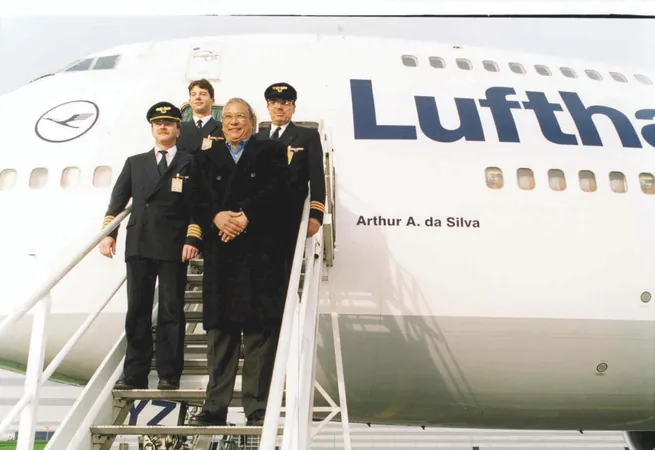
Hong Kong's Airfreight Sector Faces Major Challenges: What's Next?
2025-09-10
Author: Kai
The Decline of Hong Kong’s Airfreight Terminal Efficiency
Hong Kong, once a bustling hub for cross-border e-commerce airfreight, is now facing steep declines in volume, particularly on transpacific routes. Major Chinese platforms like Alibaba, Taobao, Temu, and Shein are cutting airfreight costs, prompting a reevaluation of logistics strategies that impact the city's air cargo business.
Policy Changes and Their Impact
A significant policy shift has exacerbated this decline: the cancellation of the US de minimis rule during the Trump administration. This change has made low-value shipments more costly, leading to a reduction in exports to the US and Europe. As a result, Hong Kong’s cargo terminals, which heavily relied on a continuous flow of small parcels, are now struggling with underutilized capacity and unpredictable scheduling.
Emerging Competition from the Greater Bay Area
With rising competition from mainland airports in Guangzhou and Shenzhen, which are ramping up direct freighter services, Hong Kong's role as a transshipment hub is being put to the test. Arthur Antonio da Silva, managing director of Jet-Speed Air Cargo Forwarders, candidly acknowledges the challenge: "More and more freighters are flying directly from Shenzhen and Macau, changing the dynamics for us here in Hong Kong."
Intra-Asia Trade Holds Steady
While intra-Asia e-commerce trade remains relatively strong, the broader outlook is one of caution. Da Silva highlights a drastic drop in business to the US and weakness in the European market this year. As Hong Kong rethinks its strategies, finding innovative solutions becomes essential.
A Push for Digital Efficiency, But Not Yet Automated
Despite the downturn, the urgency to streamline cargo handling is palpable. Digital tools like e-AWB and cargo community systems are enhancing efficiency, yet advanced technologies like AI and robotics are still lacking in Hong Kong's airfreight terminals. Da Silva notes that while computer automation exists, AI and robotics have yet to make their debut.
Regulatory Challenges and Increased Costs
Adding to the complexity are heightened regulations from the Civil Aviation Department in Hong Kong, which are making transshipment more cumbersome and costly. This scenario is putting additional pressure on airfreight operations, further complicating Hong Kong’s position as a leading logistics hub.
The Fight for Market Share Continues
As mainland Chinese airports become increasingly competitive with lower rates and improved services, Hong Kong must maintain its edge through reliability, experience, and speed. Da Silva emphasizes that without competitive pricing or unique value propositions, the city risks losing its foothold in the airfreight sector. The journey ahead looks challenging, but innovation and agility could turn the tide.


 Brasil (PT)
Brasil (PT)
 Canada (EN)
Canada (EN)
 Chile (ES)
Chile (ES)
 Česko (CS)
Česko (CS)
 대한민국 (KO)
대한민국 (KO)
 España (ES)
España (ES)
 France (FR)
France (FR)
 Hong Kong (EN)
Hong Kong (EN)
 Italia (IT)
Italia (IT)
 日本 (JA)
日本 (JA)
 Magyarország (HU)
Magyarország (HU)
 Norge (NO)
Norge (NO)
 Polska (PL)
Polska (PL)
 Schweiz (DE)
Schweiz (DE)
 Singapore (EN)
Singapore (EN)
 Sverige (SV)
Sverige (SV)
 Suomi (FI)
Suomi (FI)
 Türkiye (TR)
Türkiye (TR)
 الإمارات العربية المتحدة (AR)
الإمارات العربية المتحدة (AR)